Mobile air conditioners: principle of operation, types, pros and cons
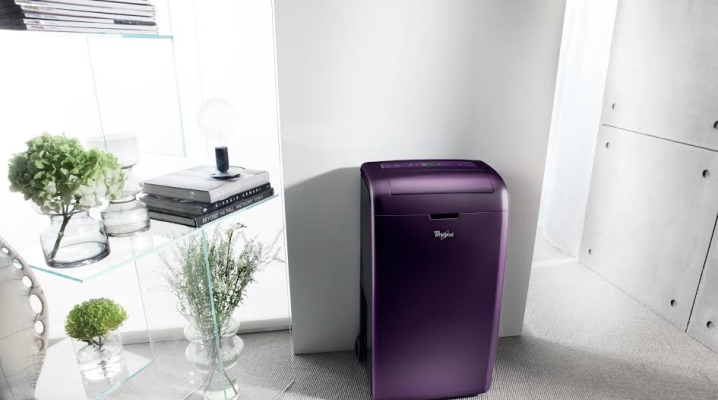
Mobile portable air conditioners today create serious competition for wall split systems and classic air conditioners. They have the same power and performance, but are cheaper and can move freely from place to place. In this article, you will learn the most important information about mobile air conditioners: how they work, popular varieties, as well as the pros and cons of such devices.
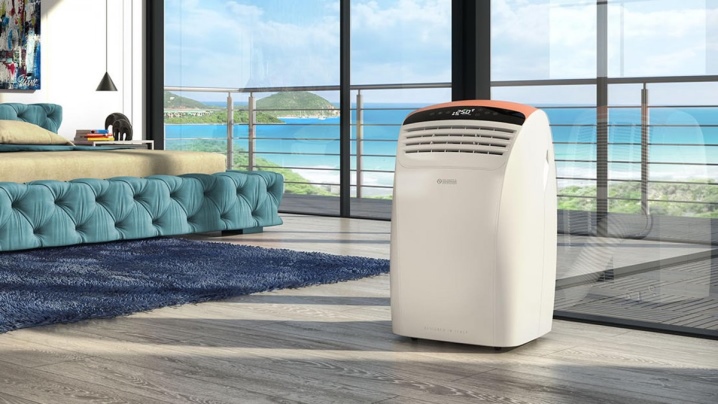
Device and principle of operation
Mobile air conditioner consists of 4 main components.
- Indoor unit. This is the main part of the device, which is responsible for adjusting its power and primary processing of air flows. There must be an air filter, a refrigerant, a grill for supplying cooled or heated air, as well as a condensate collection pan or (in expensive models) its evaporator.
- External block. This component is present only in split systems. Usually it is a square block with a fan, which is connected to the indoor unit using a cable and tubes with freon. It can be fixed to the building façade or embedded in the window frame.
- Freon highway. Consists of a cable and tubes with freon that connect the indoor and outdoor units of the mobile split system.
- Corrugation or duct. In mobile air conditioners, it is used to remove warm air outside the room. This element is not present in all modern models of mobile air conditioners.
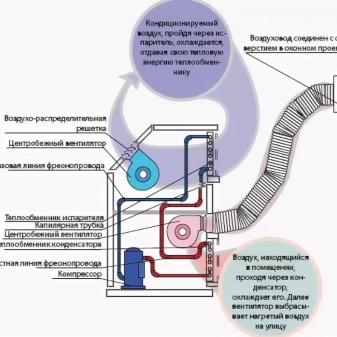
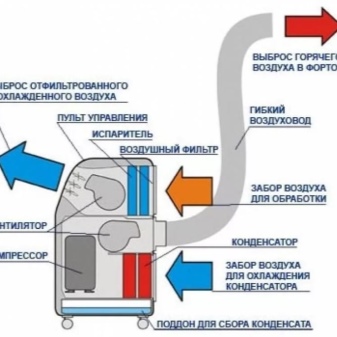
A classic mobile air conditioner works like this. Freon, which usually acts as a cooling element, continuously circulates in a closed circuit in the device. Compressed to a liquid state, it first enters the evaporator, then gradually evaporates and simultaneously cools it. After that, the refrigerant moves through the compressor and, already in a liquid state, enters the condenser (which, in turn, heats up). After that, the whole action is repeated anew.

The first air flow through the heat exchanger directly enters the evaporator cooled after freon, then passes through the installed filters and exits outside with the help of fans. Another stream of air entering the device through the condenser cools it, and the heat generated during this process is discharged outside the device with the help of a corrugation.
Advantages and disadvantages
Mobile air conditioners are complex devices designed to control the microclimate of a room, and therefore they have their own advantages and disadvantages. Some of the described pros or cons will be specific to certain models and varieties of mobile air conditioners.
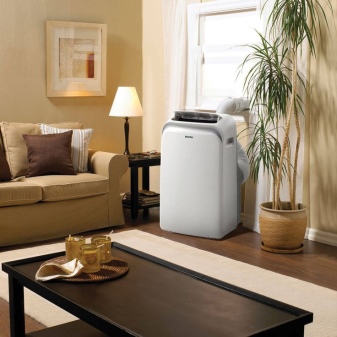
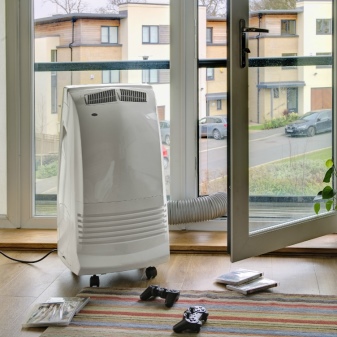
Pros.
- If you buy a model without a corrugated pipe or duct, there is no need for any installation. You just buy a device, choose a place to install it and connect it to the network.
- The name of such air conditioners speaks for itself - such a model can move almost freely within the room and even be used on long trips, if there is a portable battery in its set. Models with convenient wheels are very popular today, which allow you to change the position of the device at any convenient moment.
- If we talk about monoblock models of mobile air conditioners, which are most popular today, then they do not have any additional block elements that need additional installation.
- Most often, such air conditioner options are much cheaper than classic models. The same goes for electricity costs with comparatively similar capabilities and power ratings.
- Modern mobile air conditioners have a number of characteristics and functions necessary to create an ideal indoor climate. Models with the function of ionization, dehumidification and air purification from flower and house dust are especially popular. Timers, auto shutdown, inverter operating mode, ventilation speed set and others can act as additional functions.
- Mobile air conditioners can be successfully used in both warm and cold seasons. Quality models are equipped with a climate control function and can automatically adjust the heating / cooling temperature or humidity level.
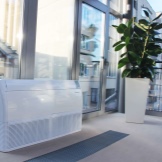
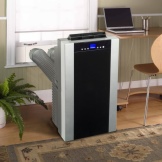
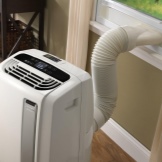
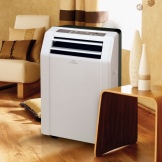
Minuses.
- Despite the high power, such devices can only serve a strictly defined area and are not suitable for working in several rooms.
- Models of mobile air conditioners, which do not provide for the presence of an air duct and an outdoor unit, are characterized by an increased level of noise and are not suitable for placement in sleeping rooms or children's rooms.
- Air conditioners, where there is a corrugated pipe for air outlet, can move around the apartment only within the limits near the window. Moreover, if the duct is already installed, the constant change of location can damage its integrity (especially if it is a two-pipe mobile air conditioner). On models without an air outlet, the power cord is usually very short, which requires keeping the unit close to power outlets.
- If there is an air duct in the model, then during prolonged operation of the device, it can become very hot. This forces you to install the air conditioner away from furniture and restrict the access of children and animals.
- Almost all household models of mobile air conditioners are large enough and need a free site for installation. These are desktop, window and floor types of air conditioners.
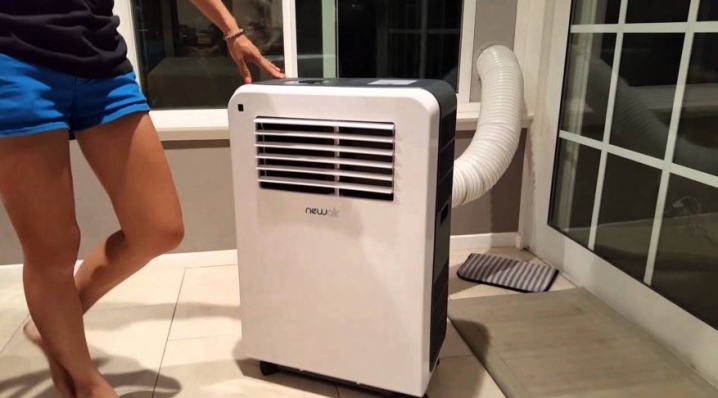
Varieties
Experts single out everything two classifications of types of mobile air conditioners today:
- in terms of compactness: monoblock models and mobile split systems;
- by number of ducts: models with one and two ducts (as well as without air outlet).
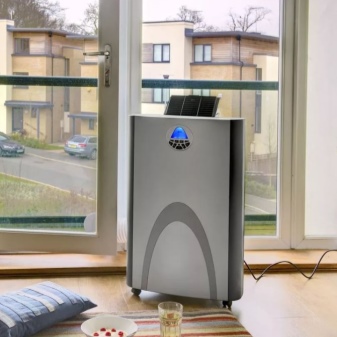
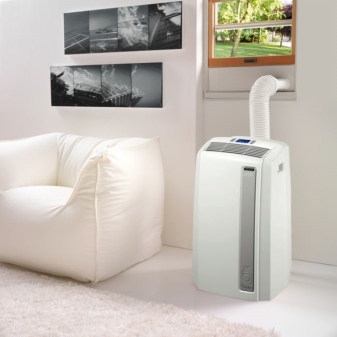
This article will consider in detail the features of the operation of models from the first classification.
Monoblock
The key feature of monoblock models is that all components of the device are located in a single unit, which can only be located indoors. Also, these devices are equipped with a corrugated pipe through which warm air flows directly into the street. Pluses of monoblock models.
- Easy and cheap installation. There is no need for professional installation - almost anyone can handle them. Difficulties can arise only at the stage of wiring the duct itself through the window frame or wall to the street. In addition, since such an installation can be performed independently, a paid call of the master is also not needed here.
- Mobility. If your monoblock model has a long enough cable, like the air duct itself, you can change the position of the air conditioner at any time and direct the air flow in the desired direction. In addition, one-piece models are often equipped with comfortable wheels.
- Simple maintenance. Unlike complex split systems with two units and a large number of additional components (which constantly get dirty), mobile monoblock models do not need to be constantly cleaned.All that is required of you is to occasionally wipe the case of the device, check the condition of the filters and remove accumulated condensation (if there is no automatic evaporation).
- No location binding. Despite the fact that mobile models require a banal installation of an air duct, this does not firmly tie them to a certain room. You can detach the fasteners at any time and move the model to work or to a country house.
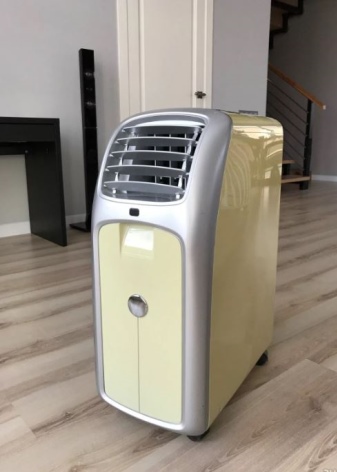
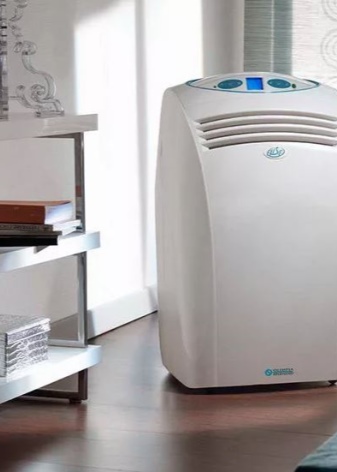
Obvious cons.
- The main disadvantage of monoblock models is that due to the fact that all the components of the device are located in one block, such an air conditioner makes much more noise than mobile split systems. Unfortunately, you have to put up with this if you want to buy a compact home air conditioner model.
- Quality monoblock devices cost a lot of money, as do the components you might need to repair them. The same goes for regularly changing the refrigerant, which can also cost a lot of money.
- In mobile devices, all the condensate that forms during the operation of the device accumulates in a certain container, which must be regularly emptied. If the container is filled to the brim, the device automatically turns off.
- In the window or wall near which your air conditioner will stand, a hole for the air duct must be made in advance. This is only possible if the window frame consists of several sashes and the wall in the room is not load-bearing.
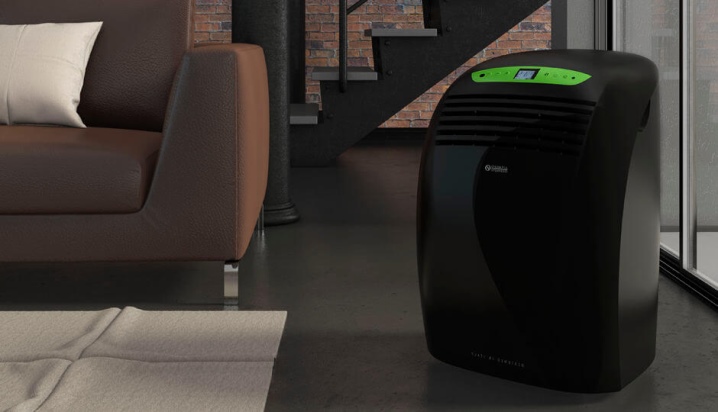
Mobile split system
The main difference between mobile split systems and monoblock air conditioners is that the former consist of two blocks connected by tubes with freon. These models have their pros and cons. Pros.
- This is the quietest climate system due to the installation of an external unit on the facade of a building or on a window frame. At the same time, the indoor unit practically does not make noise and can be installed in children's rooms and bedrooms.
- Mobile split systems have more power than monoblock systems and are able to cover a wider area.
- Modern models of these appliances are also equipped with wheels, which provide the appliance with almost the same mobility as monoblock air conditioners.
- In some models of mobile split systems, there is no need for installation at all.
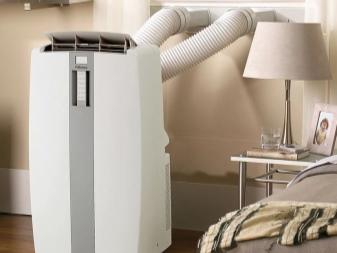
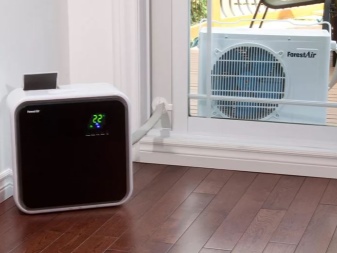
The disadvantages of mobile split systems are almost identical to the disadvantages of monoblock air conditioners. Meanwhile, there is one individual drawback - low mobility of devices due to the short length of cables with freon.
Popular models
Below is a list of the most popular mobile air conditioners according to real buyers and Internet users. These are models that work for both cooling and heating.
- Electrolux EACM-10HR / N3. An excellent portable air conditioner with automatic condensation drain function and a low noise level of 44 dB. This model can work efficiently on areas up to 25 sq. meters, while it has an excellent power of 2.7 kW. It is considered not only universal, but also energy-saving - its energy consumption class A.
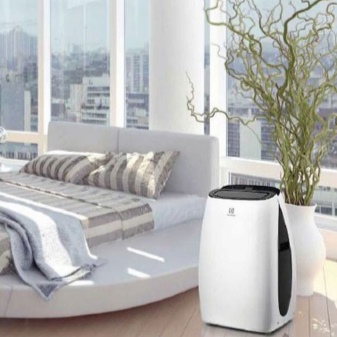
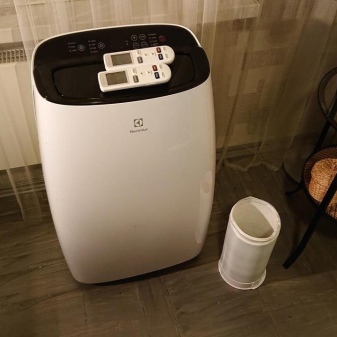
- Zanussi ZACM-09 MS / N1. Quiet and quite cheap model with self-diagnosis and dehumidification function. It copes well with cooling rooms up to 25 square meters, there are also on / off timers and a pleasant night mode that can reduce the noise level of the device by up to 30 dB. Unfortunately, the model lacks the condensate evaporation function.

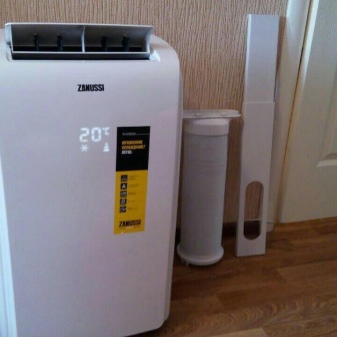
- Ballu BPHS-14H. A chic model in terms of power and design, it is equipped with a fan with 3 full speeds, there is a remote control. The device can work for cooling, heating and even dehumidification of the room. Energy class - A. The manufacturer claims a noise level of no more than 52 dB, but buyers seriously doubt this figure.
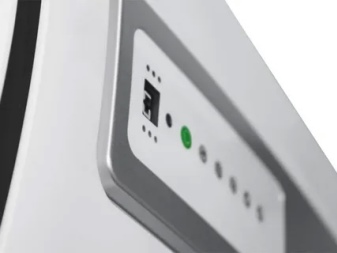
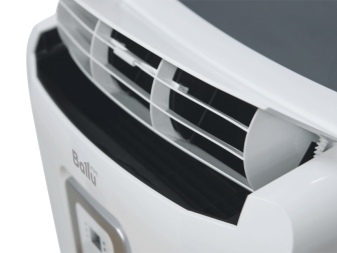
- Royal Clima RM-AM34CN-E Amico. A floor-mounted version of a mobile air conditioner, which is appreciated for both efficiency and safety of use. The device is capable of operating in 4 modes: heating, ventilation, dehumidification and cooling. Additional pluses: 3 fan speeds, hypoallergenicity, the presence of timers. Despite such versatility, it is not designed for heating large rooms due to the average power of 2 kW.

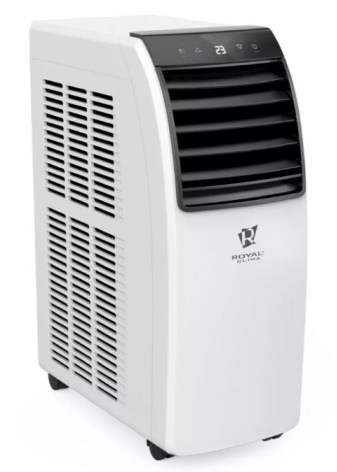
- Aeronik AP-09С. An excellent choice when buying an air conditioner model that works exclusively for cooling. This is a floor-standing model with a remote control, ventilation, dehumidification, auto-restart and a relatively low noise level. The difference from previous models is that there is no need to remove condensate due to its evaporation in the heat exchanger.
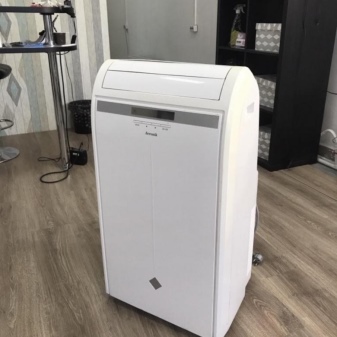
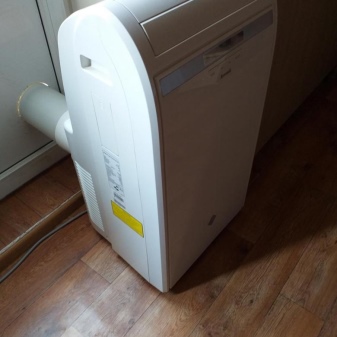
How to choose?
Mobile air conditioners are complex devices with many important and complex components, and therefore their choice should be taken as responsibly as possible. List of factors to look out for when choosing a mobile air conditioner.
- Power is the most important factor that will directly affect the efficiency of your device. The required capacity of the air conditioner should be calculated according to the following scheme - for 10 sq. meters of the room should have enough power of 1.5 kW. If you have a large room or apartment with an area of more than 25 squares, then you should buy powerful models over 2 kW.
- The second very important criterion when choosing a mobile air conditioner is the maximum noise level of the device. Most often, you will come across monoblock versions of air conditioners with a noise level of 38 to 46 dB, but sometimes you may encounter options up to 56 dB. If you are choosing a device for a sleeping or children's area, it is best to buy a mobile split system or a quiet air conditioner with a tangential fan.
- Any household appliances should not harm the health of your loved ones. That is why mobile air conditioners with environmentally friendly and safe refrigerants are gaining popularity today. Freon of the R410A type is considered the best in terms of environmental friendliness. The type of refrigerant used must be indicated on the packing elements or on the body of the device itself.
- Air conditioners, whether they are of the classic or mobile type, in addition to cooling or ventilation, are capable of performing a lot of useful and convenient functions. Among the most common are remote control, heating mode, ionizing and antibacterial filter, hard filter, dehumidification mode, on / off timers, multiple speeds, self-diagnostics and automatic error detection.
- The length of the components - this factor greatly affects the mobility of the device itself. It is not recommended to install air ducts longer than 1.5 meters, and an independent increase in the length of such a pipe will not lead to anything good. There are no restrictions regarding the cable for connecting to the network and freon tubes - the longer they are, the more convenient it is to change the location of the air conditioner.
- The working area is also one of the most important indicators when choosing an air conditioner model. It indicates the maximum allowable area of the room in which a certain device can be used. Keep in mind that this figure is usually overestimated by 7-10 sq. meters.
- The type of control usually affects only the usability of the device. There are mechanical and electronic air conditioners. Mechanical is considered safer, but there are usually few additional adjustable functions. Electronic control is more convenient, but it can quickly break. Most often, models are equipped with a remote control, which greatly simplifies the operation of the device.
- Energy consumption is a very significant factor for consumers who save on everything. If you are one of them, then you should choose models of air conditioners with energy efficiency class A or A +++.
- Dimensions and weight are important factors for shoppers with limited space. Large and heavy mobile air conditioners are usually designed for large rooms or private houses, but for small rooms, options with dimensions no more than 40 * 40 * 30 cm may be suitable. As for weight, mobile air conditioners not heavier than 28 kg are considered optimal.
- The more complex the air conditioner model, and the more functions and characteristics it has, the more chances that something will break and require repair. In this case, it is best to contact the service center, so try to buy models with a guarantee of at least 1.5-2 years.
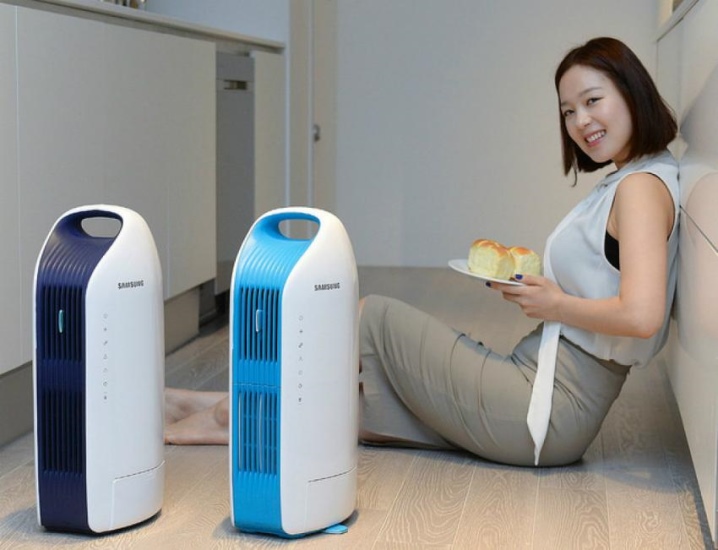
Installation recommendations
High-quality models of mobile air conditioners are almost completely automated and require minimal adjustment and tuning skills. Below is a set of rules and recommendations that will help you when installing such a device.
- For monoblock air conditioners with air duct and split systems, you should determine in advance the location of the device. It should be located near a window or room door.
- A corrugated pipe or freon cable is mounted directly into the window opening or led to the building facade through a through hole in the wall. It is because of this rule that one should decide on the purchase of air conditioners even at the stage of repairs in the room - so you can prepare a room project taking into account this device. For more convenient installation of communications to the window frame, a special adapter adapter is usually used.
- Make sure that no furniture or other foreign objects stand in the way of communications. Keep in mind that the duct will most likely get hot and could harm your equipment.
- Do not turn on the device immediately after purchasing it from a store or after installation. Let it sit in the room for a while.
- Mobile air conditioners are not recommended to be connected to the mains via extension cords. It will be better if the device is connected via its own wire to the nearest outlet. When doing this, make sure that the socket is in an accessible place.
- Connect the device only to a grounded outlet where grounding was carried out without the help of gas pipes.
- Avoid placing the device in direct sunlight. These devices are very sensitive to overheating and sudden temperature fluctuations.
- HVAC equipment should not be installed in the immediate vicinity of the walls of the room. This can lead to the formation of condensation and dust on the walls and even ruin the wallpaper. Make sure that there is at least half a meter of free space between the device and the wall.
- The device must be completely assembled during switching on.
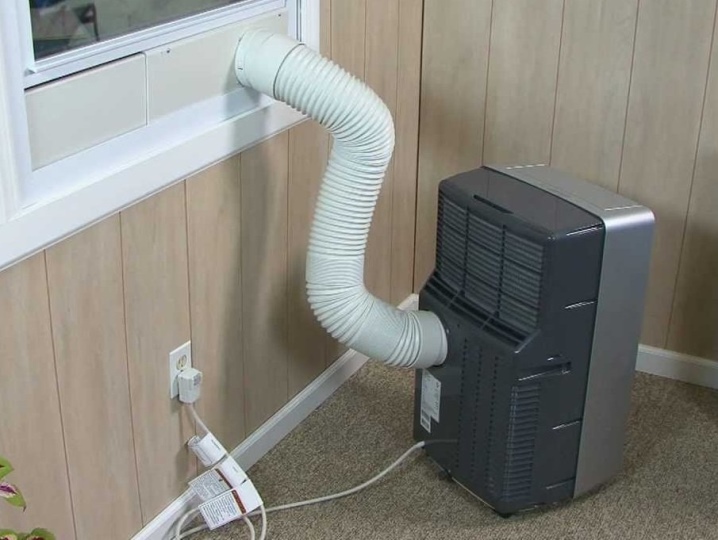
To familiarize yourself with the basic rules for installing your mobile air conditioner, you need to study the instructions or user manual included with it.
Terms of use
If your mobile air conditioner is configured correctly, then there should be no problems with its operation in the future. In no case should the air conditioner be kept in rooms with high humidity (baths, baths), as well as outside living quarters. The kitchen is not the best option for such devices, where the fumes from cooking can negatively affect both the appearance of the air conditioner and its operation itself.
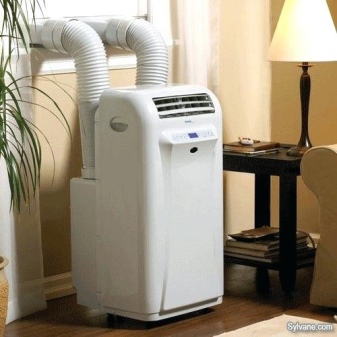
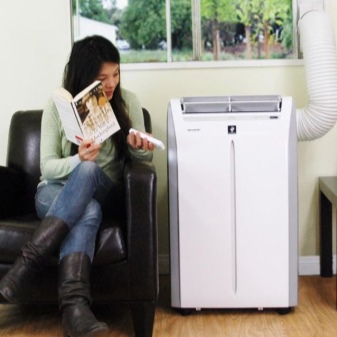
When using such air conditioners, you may encounter the problem of constant influx of cold air from the air duct hole. In this case, you should buy a better quality plug or seal all the cracks. Perform regular maintenance cleaning and washing of your appliance. The most important points to pay attention to are checking the integrity and cleanliness of the filters, checking the refrigerant level, inspecting the reliability of the fasteners (if we are talking about a split system), assessing the temperature at the outlet of the duct.
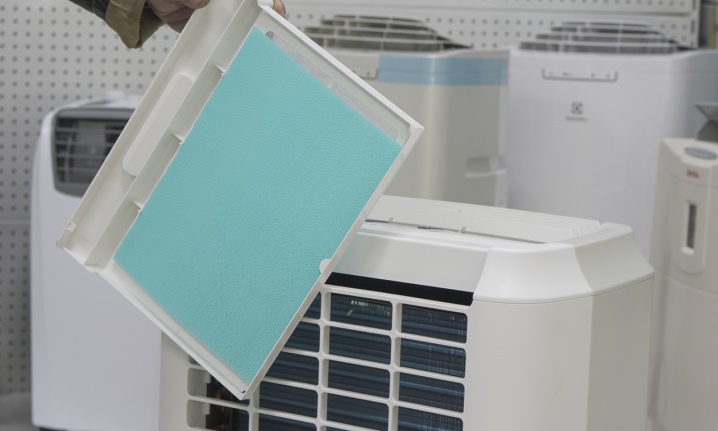
While the device is operating, completely isolate the room from the rest of the apartment - close the windows and doors. Mobile air conditioners do not belong to devices capable of operating in multiple rooms. So you will simply reduce the effectiveness of this device. A very important point, which has already been discussed above - do not forget to regularly check the level of condensate in the tank. If you are unable to keep track of this, buy models with auto vaporization.
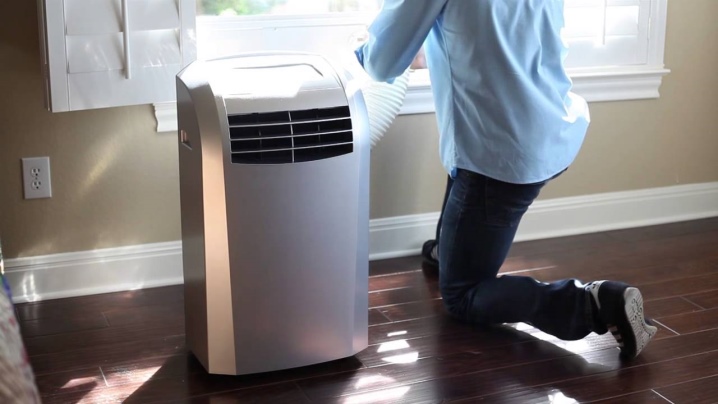
Despite the fact that such devices are called mobile devices, try to move the device from place to place as little as possible. This leads to wear of the corrugated pipe, freon line, which ultimately affects the reliability of the fastening.
Care and maintenance
The most common reason for the breakdown of floor-standing or mobile air conditioners is a decrease in the amount of refrigerant in the device. Freon usually acts as a refrigerant, but there are models of air conditioners that operate on water. On average, for a year of stable operation, air conditioners lose about 10% of the total volume of freon. This is an absolutely natural process that can only be avoided by timely refueling the device. Signs by which you can determine the low level of refrigerant in the device:
- a noticeable decrease in work efficiency or a decrease in the fan speed;
- noises that have not been observed before;
- increased energy costs;
- the body of the device, as well as the air duct, begins to be covered with a thin layer of ice.
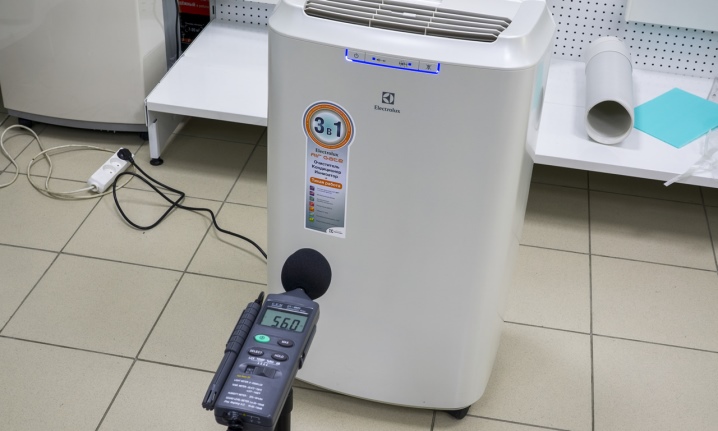
If you find at least one of these signs on your device, most likely the problem is precisely the lack of refrigerant.
Refueling of such an air conditioner can also be carried out at home. Modern models of mobile air conditioners usually use only two types of refrigerant: freon R22 and R407C. Before refueling, you should read the instructions for your air conditioner model - it is likely that there will be some individual requirements for the refueling process. In addition, it will be useful to carry out preventive cleaning of filters and housing from dirt and dust. As soon as the device is dry, start refueling.
- Unplug the air conditioner from the mains.
- Place the refueling cord in the appliance and solder it according to the instructions.
- Keep in mind that the air conditioner will not need refueling, but a full charge, so the amount of refrigerant should be calculated in advance, based on the recommended amount of refrigerant, which should be indicated in the instructions.
- Attach an empty freon bottle to your device and pump out the remaining liquid inside.
- Then you should attach to the device an already full bottle of freon and refuel the device.
- After filling the air conditioner, disconnect the filling cord and take care of sealing the air conditioner.
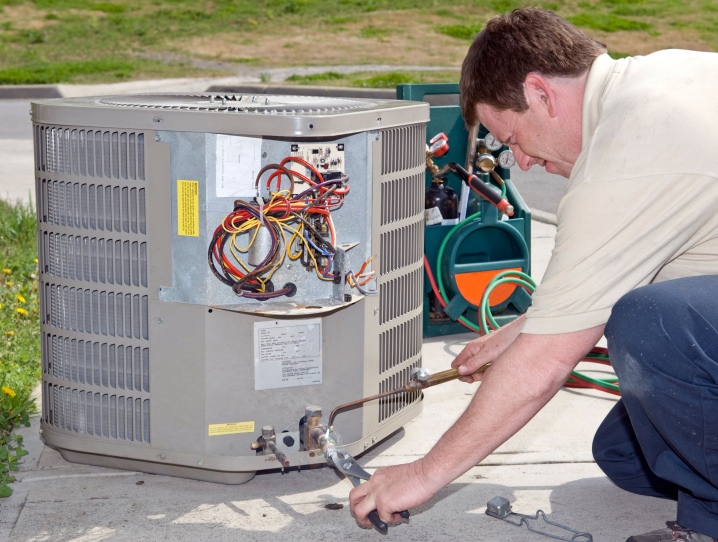
To check the correctness of the work done, just plug the device into the network, activate the weakest cooling mode and observe the operation of the device for a while. If all the signs described above have disappeared, you did everything right.
Review overview
If we consider the reviews of buyers of mobile air conditioners, then it is extremely difficult to form a unified opinion about the leadership of a certain type of such devices. As for monoblock models with an air duct, most users are not satisfied with the principle of operation of a corrugated pipe. Many people note that the installation of such pipes is extremely difficult, and the result rarely looks satisfactory and spoils the entire interior of the room.
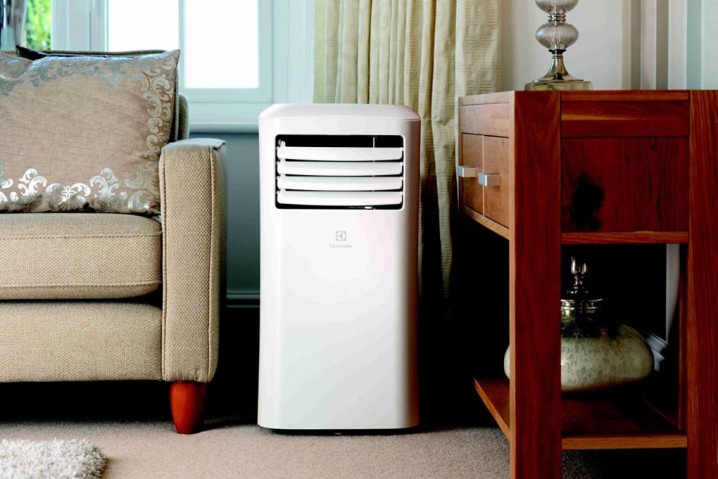
You can also find a huge number of reviews about models of mobile air conditioners without an air duct and without freon. In general, people express complete disappointment with this technique and the declared functions. Consumers note low power, frequent breakdowns, difficulty in repair and selection of parts, as well as a very high noise level. If we talk about predominantly positive reviews of mobile air conditioners, then they usually relate to some strictly defined and not necessarily expensive models, which have already been described in the paragraph "Popular models" just above.

For information on how to properly install a mobile air conditioner, see the next video.













The comment was sent successfully.